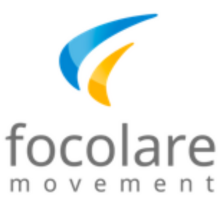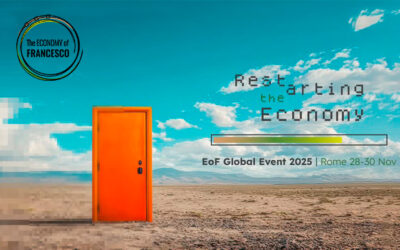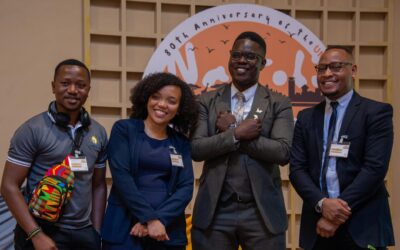 Contact between the Focolare and members of the Jewish community in various countries began in 1970’s.
Contact between the Focolare and members of the Jewish community in various countries began in 1970’s.
In 1995 representatives from the Jewish community in Rome, Italy gave Chiara Lubich a symbolic olive tree in recognition of her efforts for peace between Christians and Jews. The tree was planted in the garden of the Focolare Movement’s headquarters in Rocca di Papa, Italy.
In 1996 the first international convention between Christians and Jews, promoted by the Movement was held in Castel Gandolfo, Italy. The convention focused on the topic, love of God and neighbour. It was a great surprise to discover the consonance between authentic rabbinic tradition and the spirituality of the Movement. The highpoint of the meeting was the pact of mercy, which had been proposed by Norma Lebitt, a Jew from New York, for reconciliation between Christians and Jews of different traditions.
But a more important event took place in Buenos Aires, Argentina, when Chiara Lubich visited the country in 1998. She presented the spirituality of unity highlighting common points with the spiritual patrimony of Judaism. One highpoint was when she referred to the Holocaust: “That unspeakable pain of the Holocaust as well as more recent bloody persecutions cannot but bear fruit. We would like to share them with you so that they will no longer be an abyss that separates us, but a bridge that unites us; that they might become a seed of unity.” From then on a Day of Peace has been celebrated at Mariapolis Lia in the province of Buenos Aires.
Another meaningful moment was the meeting with Jewish friends in Jerusalem, 1999. Chiara could not attend the event, but asked Natalia Dallapiccola and Enzo Fondi to go in her place and read the presentation she had prepared. At that time Natalia and Enzo were overseeing the interreligious dialogue of the Movement. The audience, which included rabbis, greatly appreciated her answer to a question regarding the reason for suffering. Chiara quoted a passage from the Talmud: “Whoever does not experience the hiding of God’s face, is not one of the Hebrew people” (see Talmud: Mas Chagigah 5,b).
 Four international symposiums were held between 2005 and 2011: two in Castel Gandolfo, Italy, and the third in Jerusalem, 2009. The words that were used most often by Christians, Jews and members of the local Arab Focolare community to describe this event were: a miracle and hope. Everyone was eager to embrace the challenge of unity; the gathering was entitled Walking Together Towards Jerusalem. Particularly moving was the Pact of Mutual Love that was solemnly recited at the Steps on Mount Zion which, according to a tradition Jesus walked as he prayed for unity. The Pact was recited again at the Eastern Wall, known as the Wailing Wall.
Four international symposiums were held between 2005 and 2011: two in Castel Gandolfo, Italy, and the third in Jerusalem, 2009. The words that were used most often by Christians, Jews and members of the local Arab Focolare community to describe this event were: a miracle and hope. Everyone was eager to embrace the challenge of unity; the gathering was entitled Walking Together Towards Jerusalem. Particularly moving was the Pact of Mutual Love that was solemnly recited at the Steps on Mount Zion which, according to a tradition Jesus walked as he prayed for unity. The Pact was recited again at the Eastern Wall, known as the Wailing Wall.
In 2011 the symposium moved to Buenos Aires. Christians and Jews from various currents – orthodox, conservative and reformed – met at Mariapolis Lia to discuss Identity and Dialogue, a Continuing Journey. The programme was enriching with presentations in several academic fields including philosophy, anthropology, psychology, pedagogy, law and communications. These days together were important not only for the rich content, but also for the mutual listening and sharing of several experiences. One Jewish person commented: “During these days of respectful dialogue different currents in Judaism were able to come together in harmony.”
Further progress was made in 2013, in Castelgandolfo, Italy, at an international gathering where everyone tried to more deeply understand the tradition of the other.
However, the main characteristic of this fruitful dialogue is not the many meetings, but life together and the ongoing exchange of vision and experience, which has been unfolding in many cities across Europe, Israel and the Americas.
On March 20, 2014, there will be an event at the Urbania University of Rome, dedicated to Chiara Lubich and Religions: Together for the Unity of the Human Family. The gathering will highlight her efforts for interreligious dialogue, six years after her death. The event also coincides with the 50th anniversary of the Second Vatican Council’s declaration on the relation of the Church to non-Christian religions, Nostra Aetate. Leaders from the Muslim world are also expected to attend.
![]() read: Buenos Aires, 20 April 1998. Chiara Lubich to the members of B’nai B’rith and other members of the Jewish community
read: Buenos Aires, 20 April 1998. Chiara Lubich to the members of B’nai B’rith and other members of the Jewish community




0 Comments